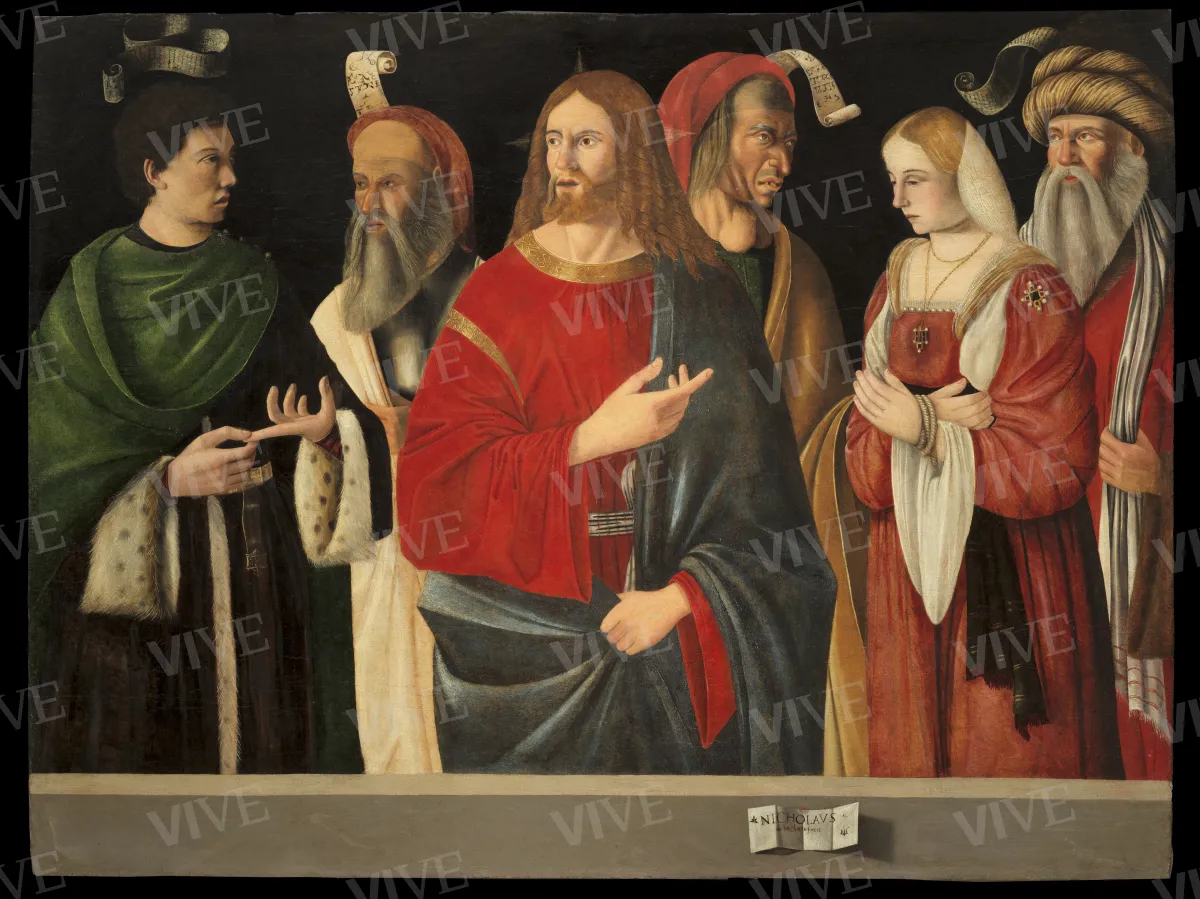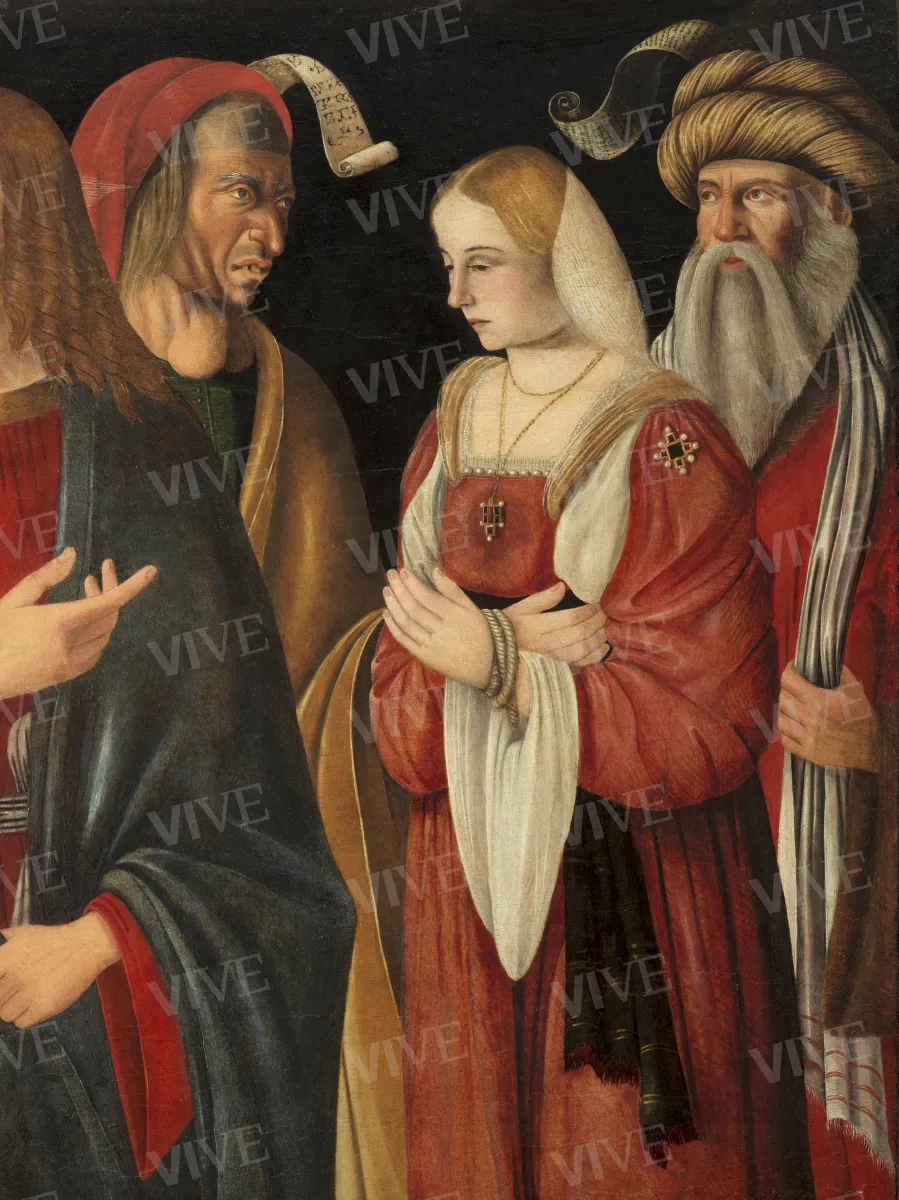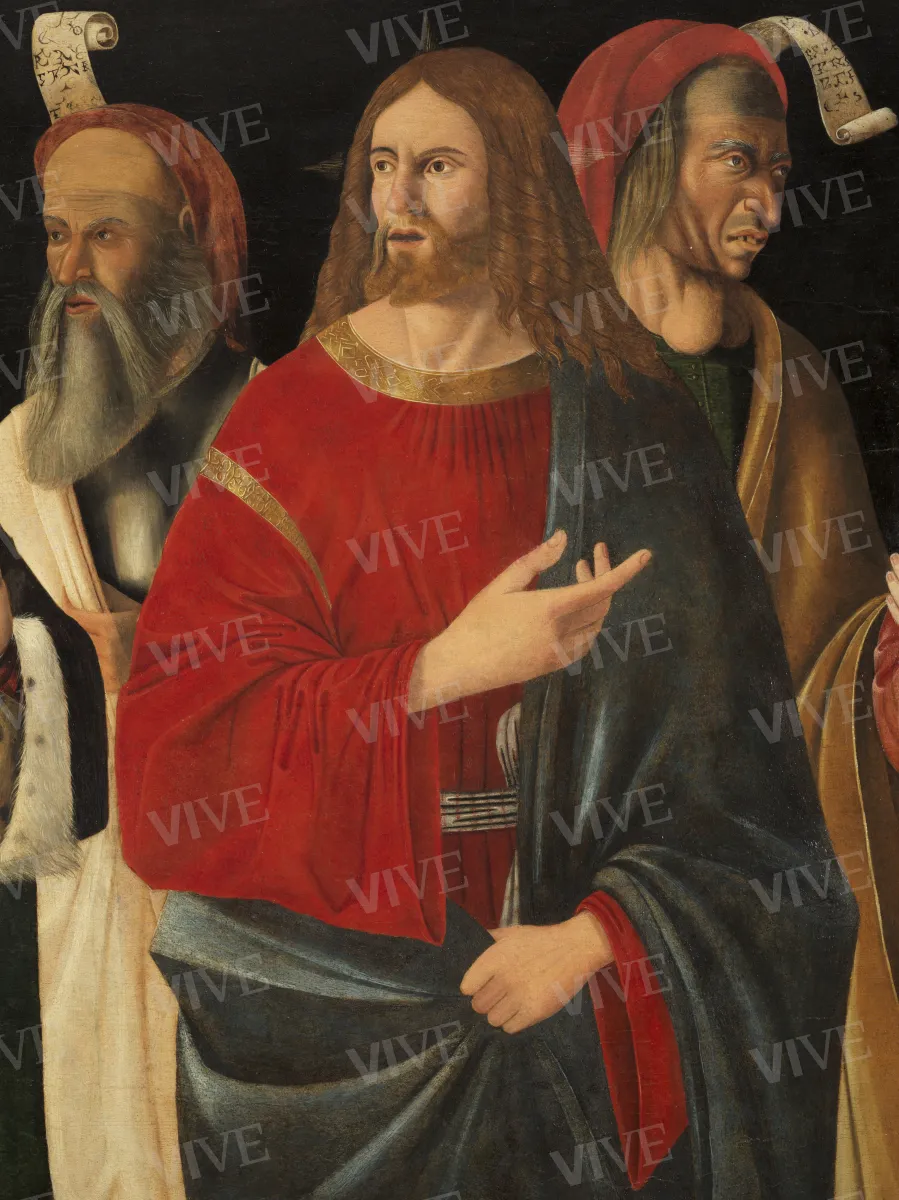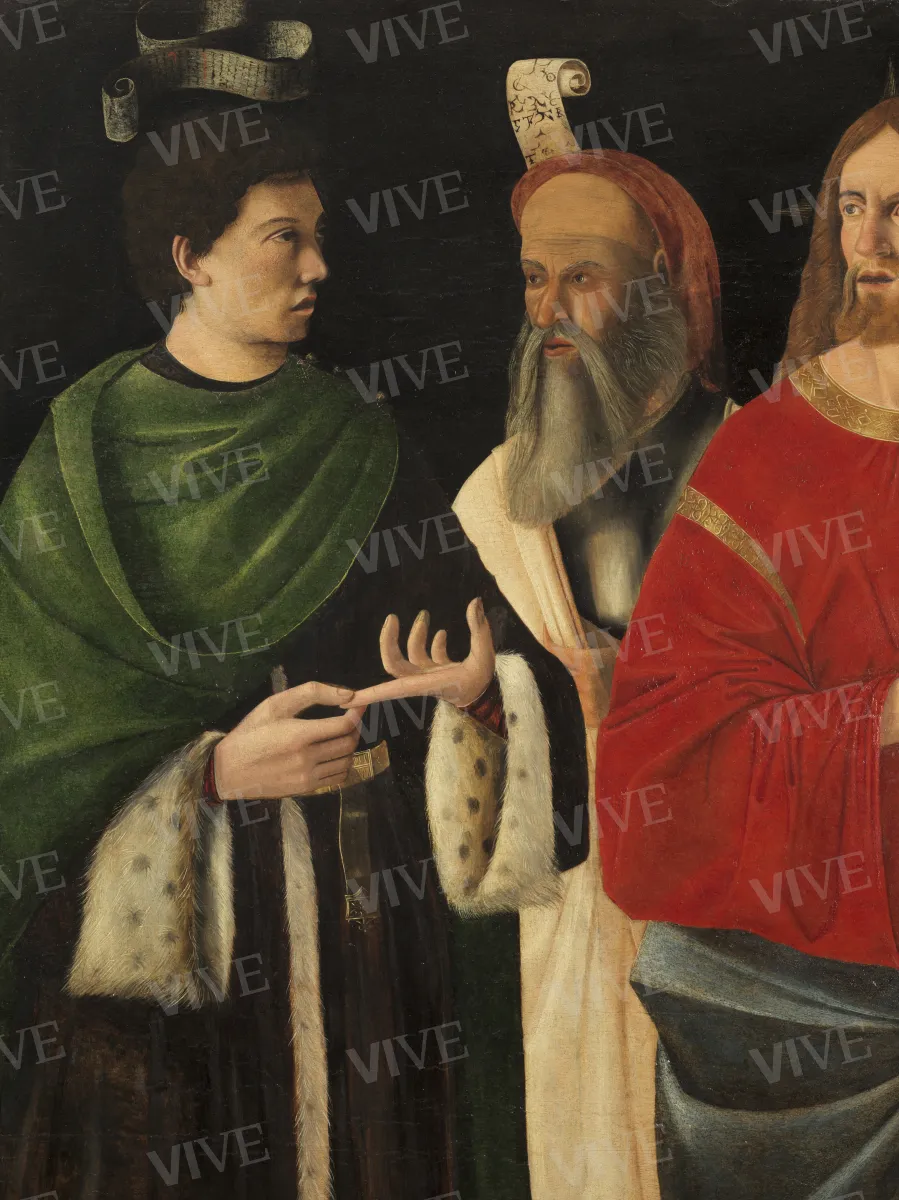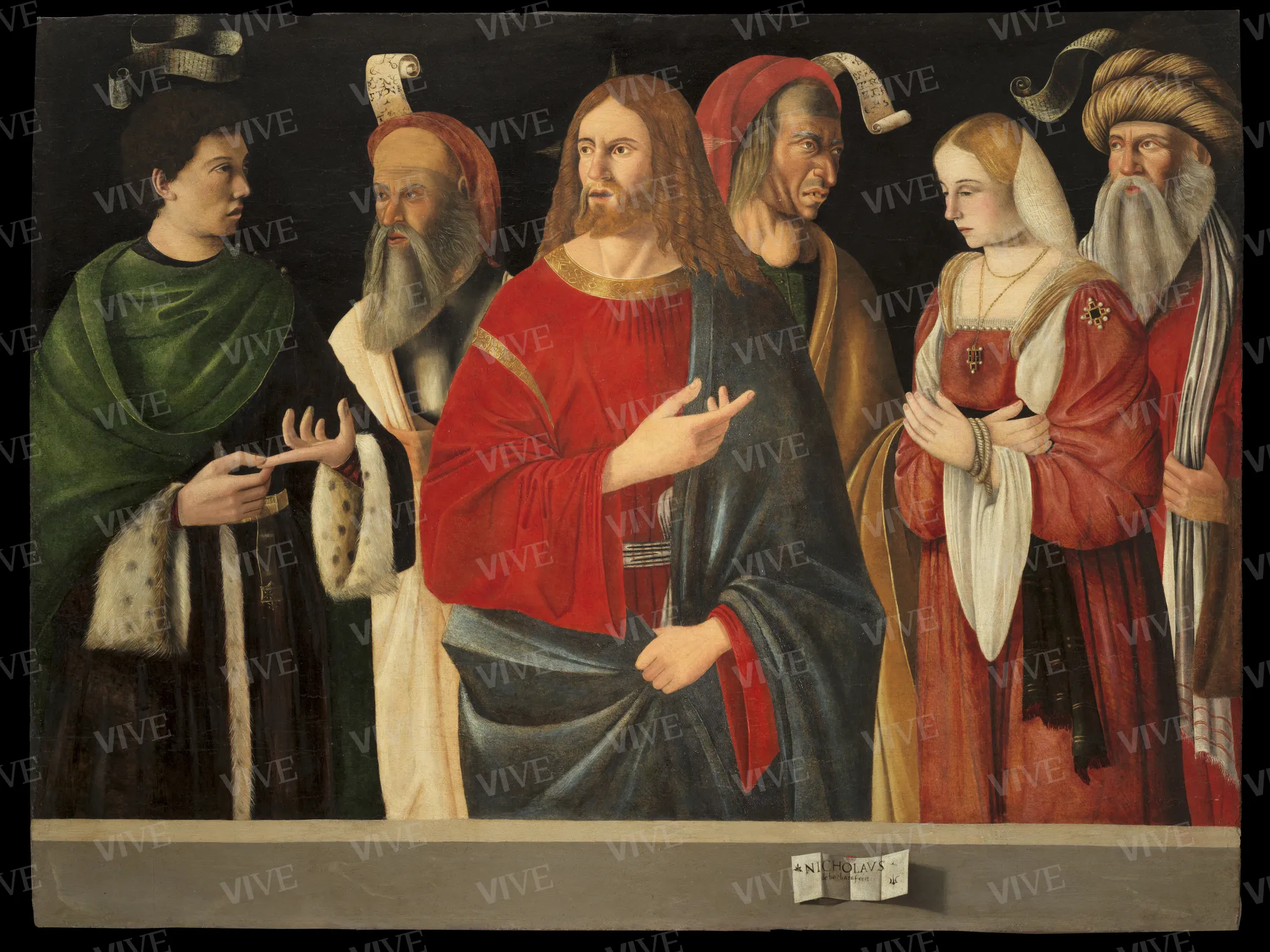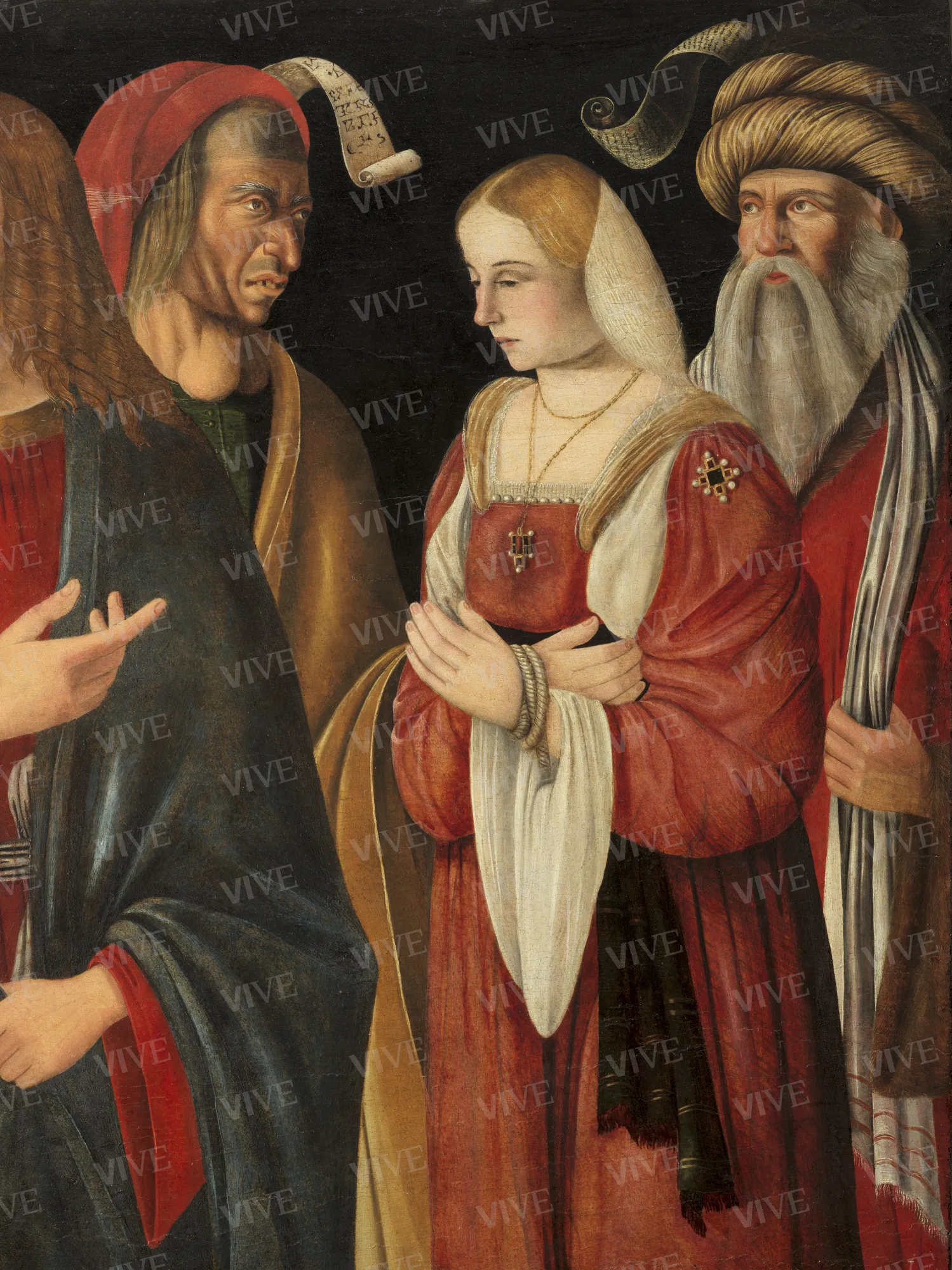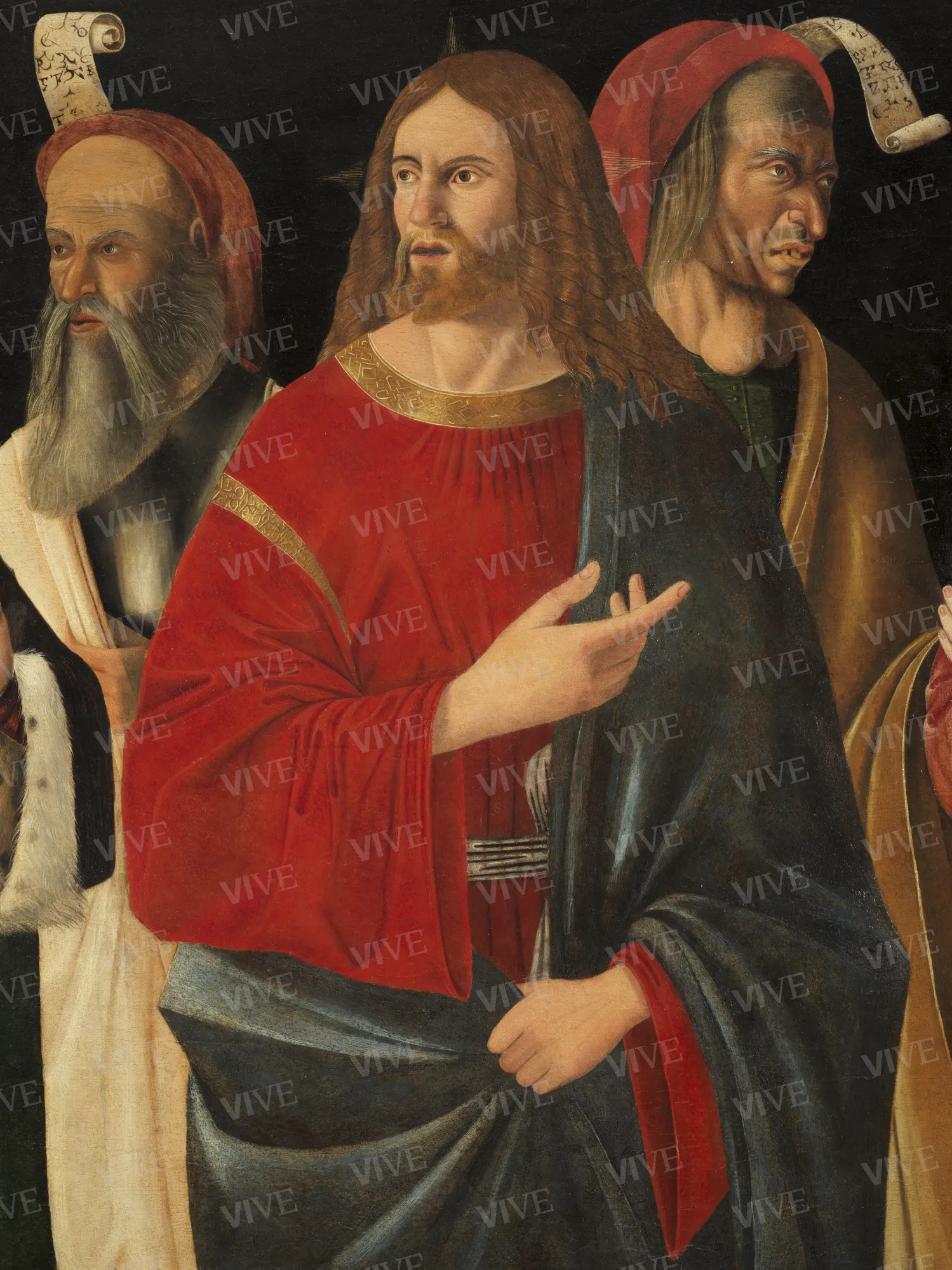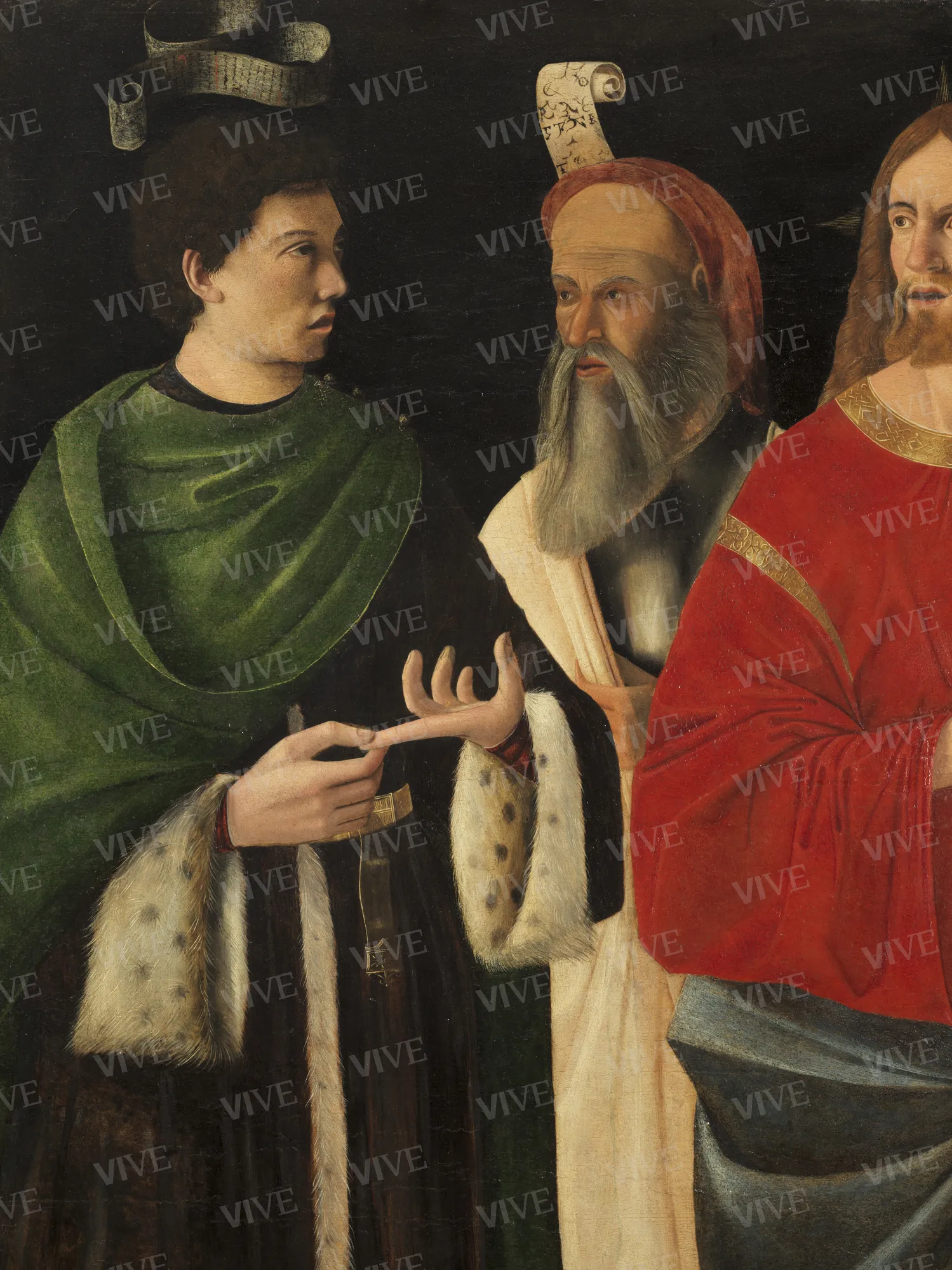Christ and the Adulteress
Nicolò de' Barbari 1506–1510
The painting depicts an episode from the Gospel of John. At the center of the scene is the figure of Christ, surrounded by members of the Sanhedrin and turned toward a richly dressed figure on his right, who appears to be discussing the sentence to be meted out on the young woman. The figures are shown in three-quarter profile against a dark background, beyond a marble parapet with a cartouche painted in trompe-l’oeil, sealed with wax and bearing the painter’s signature followed by a small trident. This work is signed by the Venetian Nicolò de’ Barbari, who was active in the early sixteenth century and whose biography remains largely unknown.
The painting depicts an episode from the Gospel of John. At the center of the scene is the figure of Christ, surrounded by members of the Sanhedrin and turned toward a richly dressed figure on his right, who appears to be discussing the sentence to be meted out on the young woman. The figures are shown in three-quarter profile against a dark background, beyond a marble parapet with a cartouche painted in trompe-l’oeil, sealed with wax and bearing the painter’s signature followed by a small trident. This work is signed by the Venetian Nicolò de’ Barbari, who was active in the early sixteenth century and whose biography remains largely unknown.
Details of work
Catalog entry
The panel, which is the only painting signed by Nicolò de’ Barbari, originates from Alvise Mocenigo palazzo in San Samuele, Venice. Likely intended for this residence, the painting remained there until 1926, when it was first documented by Mündler (Togneri Dowd 1985) and subsequently by de Hevesy in 1926. In 1930, Count André de Robilant Mocenigo donated the piece to the Museo Nazionale di Palazzo Venezia, where it has since been part of the collection (Santangelo 1947, 16). The painter, known solely through this painting, is believed to be the same as “M.° Nicolao de Barbari de Venetia pintore,” who was documented in 1516 while working for the monks of the Abbey of Montecassino (Dal Pozzolo 1992, 73, n. 1). The trident following Nicolò’s signature has been frequently associated with the caduceus accompanying the signatures of the more renowned painter Jacopo de’ Barbari, suggesting a possible close professional and familial relationship between Nicolò and Jacopo (Voss 1908), and sometimes even identifying them as brothers (de Hevesy 1926). Nonetheless, the widely accepted hypothesis of a close relationship between Nicolò and Jacopo has been questioned (Levenson 1978, 47, n. 23) and remains unconfirmed due to a lack of documentary evidence. The chronology of the painting is traditionally associated with the presence of the German painter Albrecht Dürer in Venice between 1505 and 1506. A notable comparison has been made with Christ Among the Doctors (1506, Thyssen-Bornemisza Museum, Madrid), which shares a grotesque element—evident from the figure beside Christ in both panels—and similar hand gestures. Other comparisons include Christ Among the Doctors by Cima da Conegliano (1504, National Museum, Warsaw) and Christ and the Adulteress by Marco Marziale (circa 1506, Institute of Art History, Gröninger), particularly concerning the depiction of Christ and the shared characteristics with Nordic painting (Bialostocki 1959, 29–30; Dal Pozzolo 1992, 73–74). In his reconstruction of Nicolò de’ Barbari’s artistic career, Dal Pozzolo categorizes the panel in Palazzo Venezia as one of the earliest works in Barbari’s portfolio and suggests its creation date be postponed to the late fifteenth century (Dal Pozzolo 1992, 80–81). However, this was later refuted by Engel and Ciofetta (Engel 2012a, 147–168; Engel 2012b, 33–34; Ciofetta 2018, 475). The painting’s graphic style and the prominent depiction of figures against the background firmly situate it within the Venetian context, offering a dialectical comparison with Dürer’s art. Additionally, there are typological and compositional similarities with the works of Giovanni and Gentile Bellini (Ciofetta 2018, 474).
Fabio Mari
Entry published on 12 June 2025
State of conservation
Good.
Inscriptions
“NICHOLAVS / de barbaris fecit.”
Provenance
Venice, Palazzo Mocenigo;
Rome, Museo Nazionale di Palazzo Venezia, since 1930.
Exhibition history
Turin, Reggia di Venaria Reale, La fragilità della bellezza. Tiziano, Van Dyck, Twombly e altri 200 capolavori restaurati, March 28–September 16, 2018.
References
Voss Hermann, Barbari, Niccolò de', in U. Thieme, F. Becker, Allgemeines Lexikon der Bildenden Kunstler von der Antike bis zur Gegenwart, II, Leipzig 1908, p. 464;
de Hevesy André, A Picture by Nicolò de Barbari in Venice, in «The Burlington Magazine for connoisseurs», XLVIII, 1926, p. 206;
Santangelo Antonino (a cura di), Museo di Palazzo Venezia. Catalogo. 1. Dipinti, Roma 1947;
Hermanin Federico, Il Palazzo di Venezia, 1948;
Bialostocki Jan, "Opus quinque dierum", Dürer's 'Christ Among the Doctors' and its Sources, in «Journal of the Warburg and Courtauld Institutes», 22, 1/2, 1959, pp. 17-34;
Levenson Jay Alan, Jacopo de' Barbari and Northern Art of the Early Sixteenth Century, Ph. D., New York, New York University 1978;
Togneri Dowd Carol (a cura di), The Travel Diaries of Otto Mündler 1855-1858, in «The Volume of the Walpole Society», 51, 1985, pp. 69-157;
Dal Pozzolo Enrico Maria, Nella selva di Nicolò de' Barbari, in «Saggi e memorie di storia dell'arte», 18, 1992, pp. 71-83, 183-193;
Barberini Maria Giulia, Sconci Maria Selene (a cura di), Guida al Museo Nazionale del Palazzo di Venezia, Roma 2009;
Engel Sabine, Das Lieblingsbild der Venezianer. Christus und die Ehebrecherin in Kirche, Kunst und Staat des 16. Jahrhunderts, Berlin 2012;
Engel Sabine, Disciplinare le donne attraverso la pittura: Cristo e l'adultera di Nicolò de' Barbari (c. 1506), in Bellavitis Anna, Filippini Nadia Maria, Plebani Tiziana (a cura di), Spazi, poteri, diritti delle donne a Venezia in età moderna, Verona 2012, pp. 31-42;
Ciofetta Simonetta, Banchelli Carlotta, Ciardi Maria Rita, Righetti Isabella, scheda n. 51 (Nicolò de’ Barbari, Cristo e l’adultera), in Bertelli Carlo, Bonsanti Giorgio, Restituzioni. Tesori d’arte restaurati: La Fragilità della Bellezza. Tiziano, Van Dyck, Twombly e altri 200 capolavori restaurati, catalogo della mostra (Torino, Reggia di Venaria Reale, 28 marzo-16 settembre 2018), Venezia 2018, pp. 472-477.

